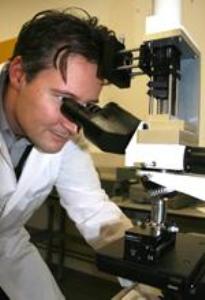Particle & Surface Sciences launches the NanoSight NTA device for characterizing nanoparticles with the LM-10. NanoSight explains that global research firms studies emerging processes to determine the performance of nanomaterials characterization quantitatively.
National Physical Laboratory, UK is working with metrology institutes using innovative traceable standards and procedures to determine the shape, size and allocation of nanoparticles with a precision above 1nm.
 National Physical Laboratory uses NanoSight’s NTA system
National Physical Laboratory uses NanoSight’s NTA system
Techniques used to examine the shape, physical properties, and dimension of particle includes dynamic light scattering (DLS), electron microscopy (SEM and TEM), atomic force microscopy (AFM) and nanoparticle tracking analysis (NTA).
Dr Alexandre Cuenat of the National Physical Laboratory, UK, is calculating and modeling interactions of nanomaterials. Dr. Cuenat used NanoSight’s NTA methodology to investigate liquid-based nanoparticles, which are associated with ease of use, durability, and reproducibility.
The NTA offers exceptional size distribution associated by the ability to image, size and count each particle. Dr. Cuenat mentioned that NTA can be used to investigate polydisperse materials of dimensions from 20nm up to 1mm.
NPL has studied several calibration materials including zinc oxide, gold, silica and silver nanoparticles. NPL has characterized such materials even when there were constraints such as sample agglomeration. NanoSight is developing new techniques to be suitable for materials or life sciences applications.
Jeremy Warren, CEO of NanoSight, stated that a number of users wish to utilize the NTA to perform quality assurance and routine analytical testing. About 300 systems around the world, from the materials sciences to the life sciences, utilize the NTA-based characterization method to study nanoparticles quantitatively.